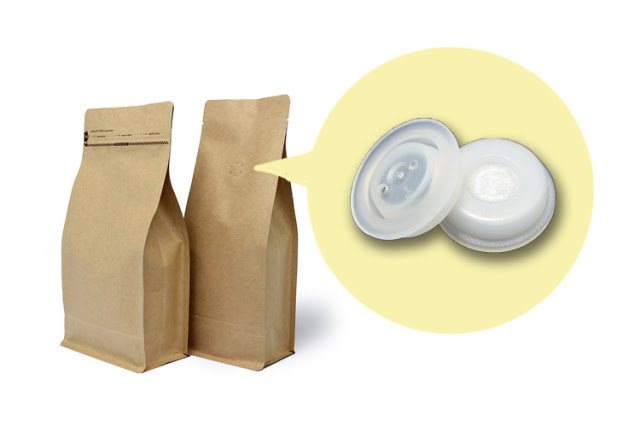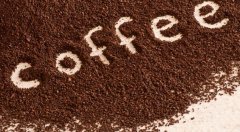The belly button on the coffee bean bag! One-way valve hole is the key to keeping coffee beans fresh.

For professional baristas, please follow the coffee workshop (Wechat official account cafe_style)
I don't know if you have ever had such experience. When you choose coffee beans in a store or market, you can see a hard, round, mysterious object with a small hole on the bag. At first sight, most people will curiously pick it up and look around and look around. If you press it, you can smell the coffee in the bag, but you still can't see why.
Is the hole in this round object for everyone to test the fragrance of coffee beans? No, please don't get me wrong. Today, the editor is going to teach you how to understand this mysterious circular object with holes.

It has a professional name, called "one-way discharge valve". As the name implies, the gas in the bag can only "discharge" the oxygen in the bag and cannot enter the oxygen from the outside to ensure the quality of the coffee beans.
Coffee begins to decay rapidly after roasting, and the taste of coffee will be particularly mellow in the first three days after roasting, because the fragrant gas of coffee will be released with the carbon dioxide emitted by the coffee bean itself. therefore, the main purpose of putting coffee beans into a bag with an one-way exhaust valve or filled with nitrogen is to delay the deterioration and decay of coffee beans. The carbon dioxide emitted from the roasted coffee beans will fill the bag, and the oxygen will be discharged through the one-way discharge valve to prevent the coffee beans from oxidizing and lead to the rapid emission of fragrance, and because of the one-way discharge valve, the bag will not burst because of the carbon dioxide emitted by the coffee beans.

But of course, the one-way discharge valve can also be used as a "smell hole". You can really test the fragrance of coffee beans slightly through this hole. Please remember to press it gently, because this action will accelerate the decline of coffee bean quality.
As a coffee expert, it is very important to understand the basic knowledge of coffee, in which the packaging and preservation of coffee beans is a very important link, but all that has been said above, the bags of coffee beans only assist in prolonging the shelf life of coffee beans, and the most important thing is to drink them as soon as possible.
Important Notice :
前街咖啡 FrontStreet Coffee has moved to new addredd:
FrontStreet Coffee Address: 315,Donghua East Road,GuangZhou
Tel:020 38364473
- Prev

How to preserve coffee beans?! 6 ideas to make preservation more fresh?
The exchange of professional baristas please pay attention to the rich and profound aroma of coffee in the air of the coffee workshop (Wechat official account cafe_style), with the highest sense of smell. Like most families, you also buy coffee beans and store them at home in order to enjoy the aroma of coffee every day, only to put them in oil? (the editor would never talk about this kind of experience.
- Next

Know the evaluation items and score grades of Coffee Review coffee evaluation / coffee scoring system
Professional baristas exchange please follow the coffee workshop (Wechat official account cafe_style) [Coffee Review introduction] Coffee Review literally translates the meaning of coffee evaluation. It was founded in 1997 by Kenneth Davids, who won the American Fine Coffee Association Coffee Literature Award. It has been more than ten years since it was founded in 1997. Coffee Revi
Related
- Beginners will see the "Coffee pull flower" guide!
- What is the difference between ice blog purified milk and ordinary milk coffee?
- Why is the Philippines the largest producer of crops in Liberia?
- For coffee extraction, should the fine powder be retained?
- How does extracted espresso fill pressed powder? How much strength does it take to press the powder?
- How to make jasmine cold extract coffee? Is the jasmine + latte good?
- Will this little toy really make the coffee taste better? How does Lily Drip affect coffee extraction?
- Will the action of slapping the filter cup also affect coffee extraction?
- What's the difference between powder-to-water ratio and powder-to-liquid ratio?
- What is the Ethiopian local species? What does it have to do with Heirloom native species?

